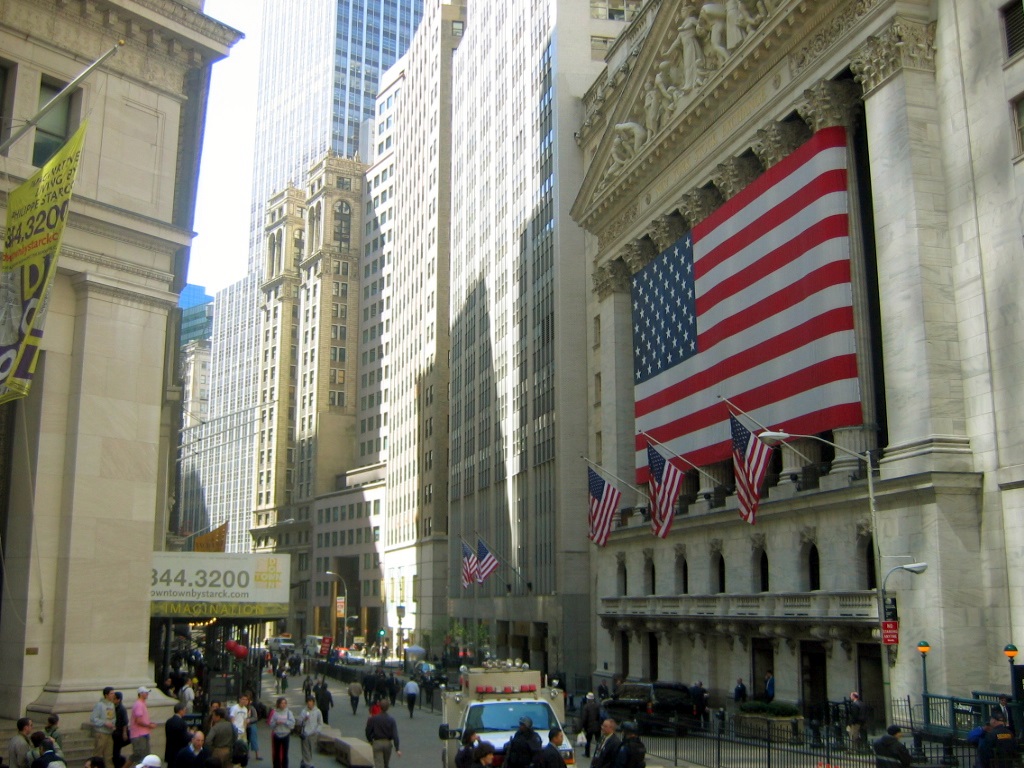L’histoire de Wall Street remonte au XVIIe siècle, à l’époque où la future ville de New York appartenait à l’empire colonial néerlandais d’Amérique. La ville s’appelait alors “La Nouvelle Amsterdam” (principalement établie sur l'île de Manhattan), et la colonie était baptisée “Nouveaux Pays-Bas”. Bien que le nom “Wall street” (signifiant “rue du mur” en anglais) tienne de l’existence d’un seul et même mur à la place de la rue actuelle, les plans de la Nouvelle Amsterdam montrent deux noms différents pour cette rue. Quoiqu’il en soit, "De Waal Straat" (nom néerlandais) ne se rapporte pas à un mur, mais à un important groupe de colons qui participèrent à la création de la Nouvelle Amsterdam : des Wallons francophones. Vers 1630, la population totale des nouveaux Pays-Bas était de 300 personnes, dont une grande majorité de Wallons. Environ 270 personnes vivaient autour du Fort Amsterdam chargé de protéger la nouvelle ville, exerçant pour la plupart le métier de fermier. Étymologiquement, en néerlandais, un Wallon se dit “Waal”.A l'heure actuelle, le terme "wallons" est couramment utilisé pour désigner les francophones de Belgique. Ce serait bien si le fait que le nom de la place financière la plus importante du monde soit lié à mon peuple lui apportait quelques sous supplémentaires...

I just read something rather surprising while randomly surfing Wikipedia, when chance took me to the article on Wall Street. Here it goes, not very clearly put and without supporting authorities but confirmed by the French version:
The name of the street derives from the fact that during the 17th century, Wall Street formed the northern boundary of the New Amsterdam settlement. In the 1640s basic picket and plank fences denoted plots and residences in the colony. Later, on behalf of the Dutch West India Company, Peter Stuyvesant, in part using African slaves, led the Dutch in the construction of a stronger stockade. A strengthened 12-foot (4 m) wall of timber and earth was created by 1653 fortified by palisades. The wall was created, and strengthened over time, as a defense against attack from various Native American tribes, New England colonists, and the British. In 1685 surveyors laid out Wall Street along the lines of the original stockade. The wall was dismantled by the British in 1699. And while the original name referred to the Walloons, a general term by the Dutch for all French speaking people, including the large group of original French/Belgian/Swiss refugees known as Huguenots that came to the Netherlands as refugees. They tories to start a new life. The name of Wall street can refer to both the people or the wall. The traditional understanding in Holland is the reference to the Walloons.Nowadays, "Walloons" is the term used to name my people: French speaking Belgians. And I wish the most important finantial place being named after us would bring us a bit of extra money...
No comments:
Post a Comment